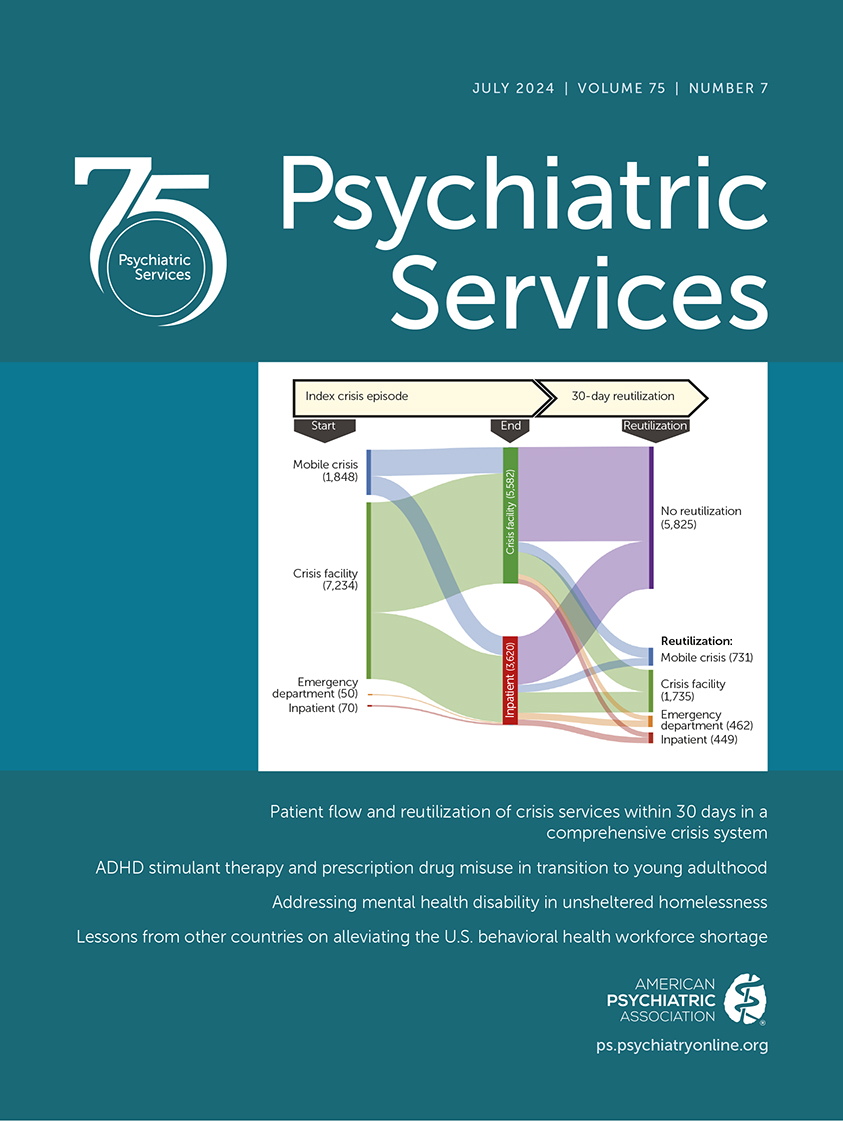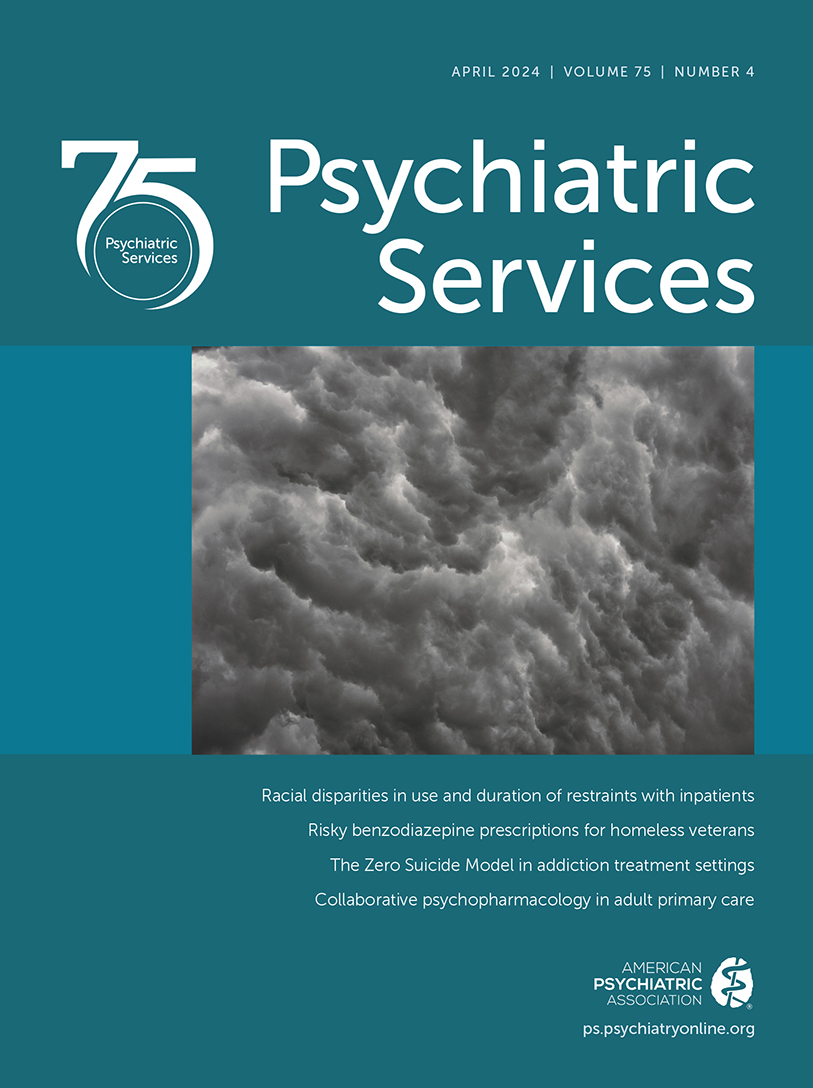Psychiatric Services
- Volume 26
- Number 2
- February 1975
Article
Publication date: 01 February 1975
Pages79–82The author suggests there is a temporal sequence of therapies for schizophrenia, in a continuum of somatic, large-group, small-group, and individual modalities. The therapies arrange themselves in the same order when considered on the parameters of ...
https://doi.org/10.1176/ps.26.2.79Publication date: 01 February 1975
Pages83–86A behavioral observation system, consisting of 12 behavior categories and an apparatus for recording them, was designed as a tool for gathering objective, naturalistic data on the ongoing behavior of hospitalized schizophrenics. After the system was ...
https://doi.org/10.1176/ps.26.2.83Publication date: 01 February 1975
Pages87–90Twenty-one paranoid schizophrenics who were being treated in a therapeutic community were divided into groups with grandiose and nongrandiose symptomatology, based on ratings on the Inpatient Multidimensional Psychiatric Scale. The nine nongrandiose ...
https://doi.org/10.1176/ps.26.2.87Publication date: 01 February 1975
Pages91–94The number of cases of catatonic schizophrenia has decreased in the past 50 years, but a few patients with the syndrome are still seen. The author describes the excited and withdrawn types of catatonia, reviews some organic and psychiatric conditions that ...
https://doi.org/10.1176/ps.26.2.91Publication date: 01 February 1975
Pages94–98The release of chronic mental patients from the hospital to the community has been prompted more by political and economic considerations than by any planned treatment strategy. Large numbers of former patients have gone to live in privately operated ...
https://doi.org/10.1176/ps.26.2.94Publication date: 01 February 1975
Pages99–101Two cases that incorporate community resources into psychiatric-medical treatment plans for private patients illustrate the use of community psychiatry concepts in a private office. In both cases the private practitioner formed treatment teams with ...
https://doi.org/10.1176/ps.26.2.99Publication date: 01 February 1975
Pages101–103A survey of halfway houses made in October 1973 identified 209 facilities primarily for psychiatric patients and 597 for alcoholics. The facilities for alcoholics average fewer employees than the psychiatric halfway houses, and proportionately more of ...
https://doi.org/10.1176/ps.26.2.101Past Issues
View Issues Archive
Vol. 75 | No. 7

Vol. 75 | No. 6

Vol. 75 | No. 5
